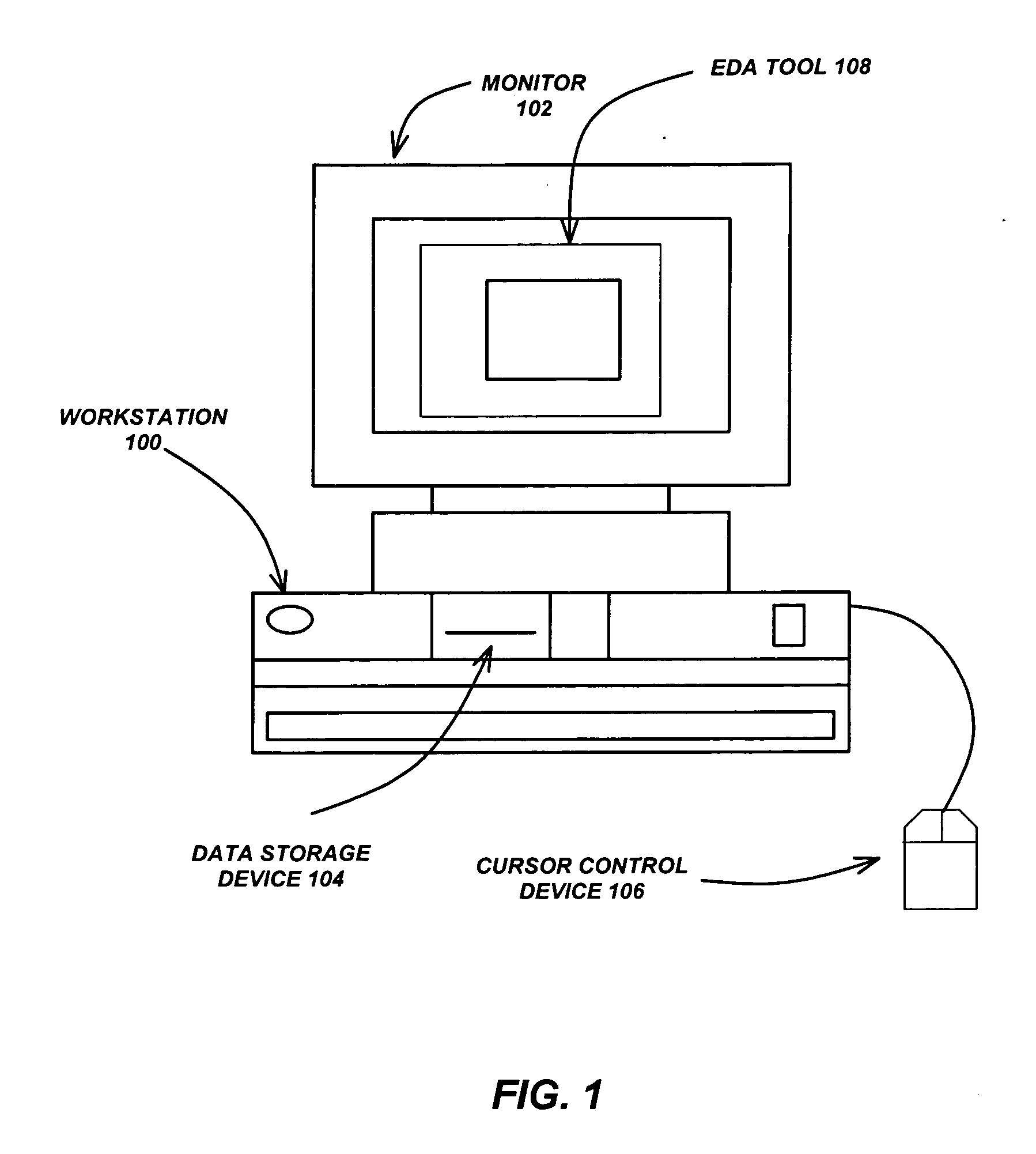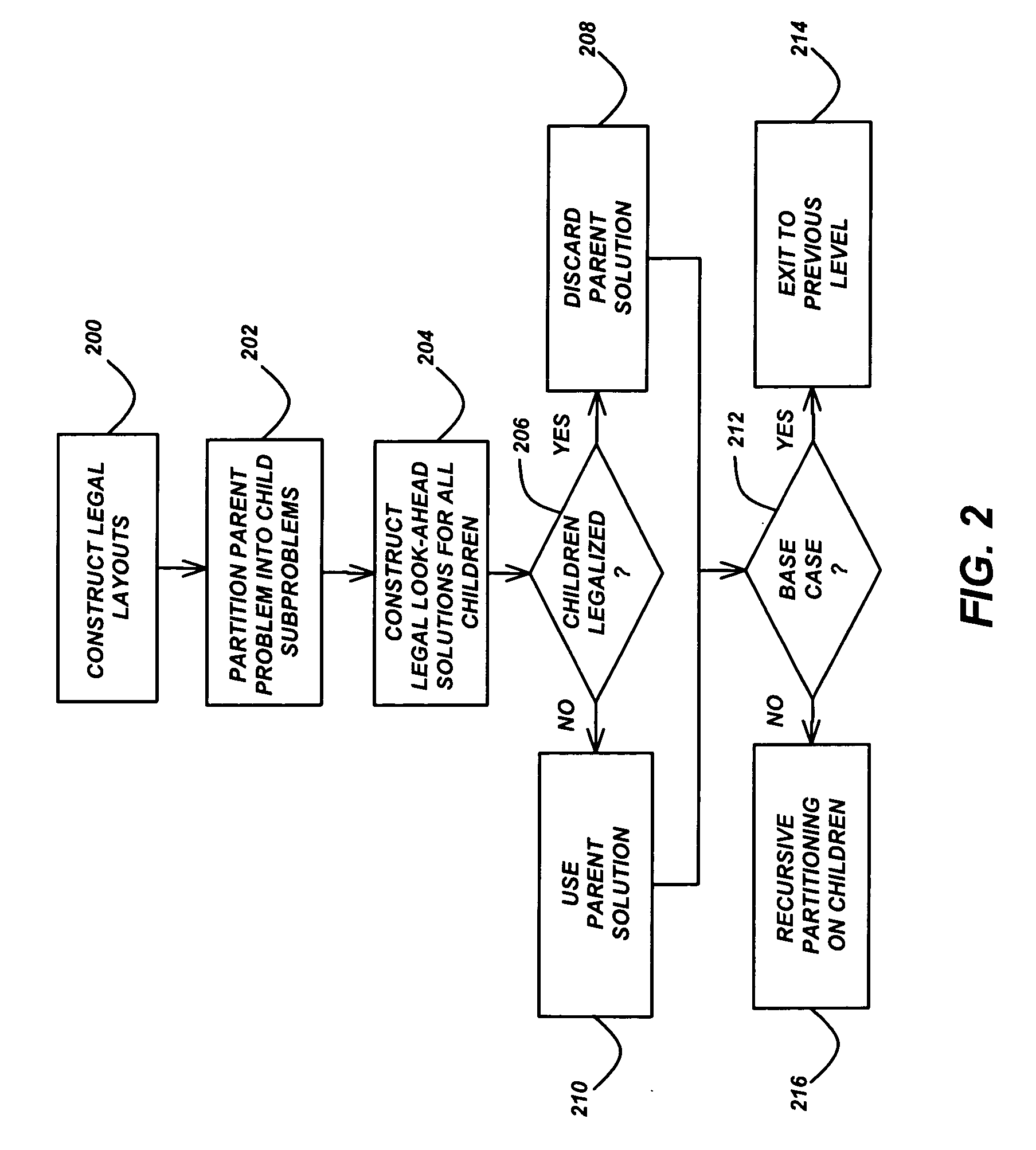Circuit floorplanning and placement by look-ahead enabled recursive partitioning
a look-ahead and recursive partitioning technology, applied in the field of integrated circuit design, can solve the problems of difficult defining base cases, difficult to find non-stochastic approaches, and the majority of the increase in the difficulty of mixed-size placement, so as to achieve less run time and improve the effect of wire length results
- Summary
- Abstract
- Description
- Claims
- Application Information
AI Technical Summary
Benefits of technology
Problems solved by technology
Method used
Image
Examples
Embodiment Construction
[0025] In the following description of a preferred embodiment, reference is made to the accompanying drawings, which form a part hereof, and in which is shown by way of illustration a specific embodiment in which the invention may be practiced. It is to be understood that other embodiments may be utilized and structural changes may be made without departing from the scope of the present invention.
[0026] Overview
[0027] The present invention, referred to here as PATOMA, includes techniques described in [22] and [23]. It is a novel methodology and algorithm for the placement and / or floorplanning of integrated circuits. The problem involves placing elements of integrated circuits in a two-dimensional or three-dimensional placement region. The placeable elements are called “modules.” Modules may be standard cells, IP macros, logic elements, or any other elements of an integrated circuit.
[0028] The placement or floorplanning is cast as the minimization of a given objective associated w...
PUM
 Login to View More
Login to View More Abstract
Description
Claims
Application Information
 Login to View More
Login to View More - R&D
- Intellectual Property
- Life Sciences
- Materials
- Tech Scout
- Unparalleled Data Quality
- Higher Quality Content
- 60% Fewer Hallucinations
Browse by: Latest US Patents, China's latest patents, Technical Efficacy Thesaurus, Application Domain, Technology Topic, Popular Technical Reports.
© 2025 PatSnap. All rights reserved.Legal|Privacy policy|Modern Slavery Act Transparency Statement|Sitemap|About US| Contact US: help@patsnap.com



